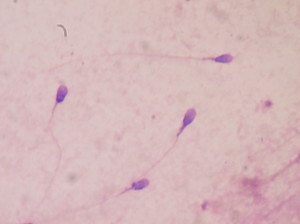Los Angeles – Human sperm’s race to their finish line used to be a private affair. Now, scientists at the University of California, Los Angeles, have developed a novel technique to view and monitor the sperm’s movement patterns in a dish.

To observe the sperm, the researchers used a lensfree imaging method. Fast-moving minuscule objects like human sperm tend to leave the observation window of a lens before data can be collected. Lensfree imaging uses an array of sensors to detect shadows, allowing for a larger imaging field and a higher magnification of the sperm.
The researchers found that the sperm move in four general patterns. Over 90 percent swim in the typical fashion, full speed ahead with little movement to the left or right. Approximately 4 percent twirl around an axis in the forward direction, and less than half a percent loop around in wide circles unsteadily while moving forward slowly.
3 percent of the sperm swim at twice the speed of the other sperm but in random directions. These sperm never make it to the finish line.
According to Dr. Aydogan Ozcan, lead author of the study published in the Proceedings of the National Academy of Sciences, this lensfree method can be used to screen sperm quality in men, and “investigate the effects of various chemicals and drugs on sperm quality.” Researchers are interested in learning whether infertile men have a higher percentage of hyperactive swimmers with no direction. If so, they may be able to develop ‘swimming lessons’ via tailored treatments, Ozcan said.
